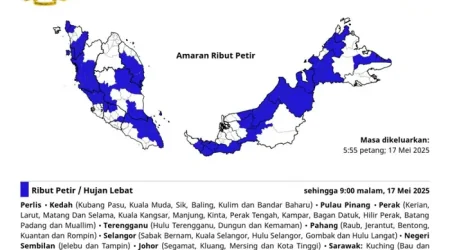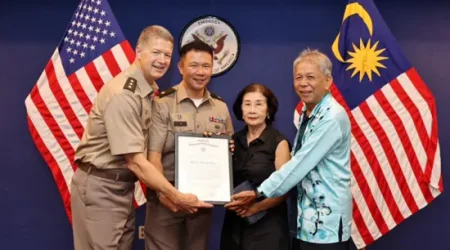Empowering Jawi script with AI technology
KUALA LUMPUR: For decades, the Jawi script has been highly regarded as the traditional symbol of Malay culture and civilisation.
Historically, Jawi became prominent with the spread of Islam in the 15th century. The Malays held the script in high esteem as it was the gateway to understanding Islam and the Quran.
The script was widely used for administrative, traditional and cultural as well as commercial purposes and had been vital in preserving the history of the Malay Archipelago.
Jawi is one of the systems for writing the Malay language using Arabic letters. Most of the Jawi script uses Arabic letters in the Quran with some modification to suit the Malay pronunciation.
The writing is believed to have existed in the 10th century in the Malay Archipelago. Today, Jawi is one of the official scripts in Brunei and is widely used in Malaysia and Indonesia.
However, the glory of Jawi in the early days has long faded away and was gradually replaced by Romanised alphabets brought by western influence, known as Rumi, with the latter being used in the nation’s administrative and educational system in the 1960s.
While modern advancements have introduced new writing systems, Jawi remains relevant given its cultural richness as well as its historical and educational importance.
The only Jawi newspaper, Utusan Melayu, was still producing its weekly edition until it ceased operations on Jan 1, 2003, due to declining sales with the last edition on Dec 31, 2002.
Today, Jawi is still being taught in schools, but scholars have voiced concern over the possibility of the script being endangered in the near future and losing its domains of use with the number of people who can read and write Jawi declining.
Symbol of Malay identity
Giving her insights on the situation, Assoc Prof Dr Rohana Mahmud from the Artificial Intelligence (AI) Department at Universiti Malaya’s Computer Science and Information Technology faculty, said Jawi should be empowered to inculcate awareness among the community, especially the Malays, on the importance of the script.
She said the Jawi script, which symbolises the Malay identity should not only be safeguarded but also empowered as a catalyst for national unity through arts and heritage.
“Jawi writing is equally important as Rumi as both scripts are written in the Malay language. While we have been aggressively promoting the Malay language, similar focus should also be given towards Jawi as it was the first script used in ancient Malaya.
“What differentiates this writing from Rumi is the letters while pronunciation is still the same; we read every word that is written in the Malay language,” she told Bernama in an interview recently.
For those interested to explore the history of Malaya, they should be proficient in reading the Jawi script as most of the materials and manuscripts are written in Jawi, she said.
Leverage AI for Jawi empowerment
Towards this end, Rohana together with a group of UM researchers are conducting a study focusing on digitalisation of manuscripts using artificial intelligence (AI).
She said the software known as Natural Language Processing (NLP) is a form of AI that enables computers to process, understand and interpret both written and spoken human language.
“Through the NLP, we can develop a computer that can have a two-way or one-way communication as well as understand human languages such as Malay, Tamil and Mandarin…this is more effective as the computer can process data and store information without boundaries,” said Rohana, who has been involved in the study of Jawi script digitalisation over the last 26 years.
She said that with the technology, Malay text can be produced in two forms, both Rumi and Jawi through transliteration.
“Through transliteration, we can change Rumi letters to Jawi or vice versa,” she added.
Rohana, who is specialised in the NLP field and the processing of text through computers, said through the procedure, Malay manuscripts and heritage that are written in Jawi can be reproduced.
Challenging digitalisation
Meanwhile, her colleague, Dr Muhammad Shahreeza Safiruz Kassim said Jawi digitalisation using AI technology can potentially expand the use of Jawi script as well as facilitate learning for those interested in widening their knowledge in Jawi.
However, he noted that the initiative is not without its challenges for the researchers in their effort to digitalise old manuscripts as the scripts were written in traditional Jawi, a combination of Arabic and Jawi words.
“Traditional Jawi has its own grammar and vocabulary. As such, producing accurate translations is fraught with challenges. Hence, research into identifying a language is also needed.
“Traditional Jawi has its own spelling system and a unique ‘Malay morphology’, in addition to words that are no longer used in today’s modern Jawi. We need to focus on the words before converting to the digital format,” he said, adding that there are also variations to the spelling of certain words, indirectly making the digitalisation process more difficult.
Continuous research
Muhammad Shahreeza said continuous research for the digitalisation process through AI technology has to be mobilised in a holistic manner, not only by specialists at higher learning institutions but also from other parties.
He said problems in the transliteration of the Jawi script can also be addressed when the process is conducted through the AI technology.
“In this regard, we believe the problem at source or the written Jawi script which is difficult to read and understand can be overcome,” he said.
However, he said since digitalisation of the traditional Jawi is still in its early stages, researchers have to focus on the study related to identification of texts that are written in Jawi.
“Jawi should be elevated and its use and interest promoted among the people so that they will have a better understanding of the script; not merely to read but they will also be able to write Jawi,” said Muhammad Shahreeza, who is currently studying the development of a prototype Jawi transliteration system to Rumi in collaboration with Akademi Jawi Malaysia. – Bernama













Leave a Reply